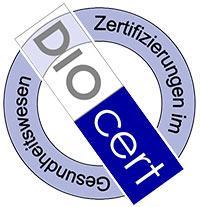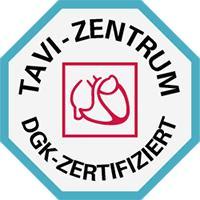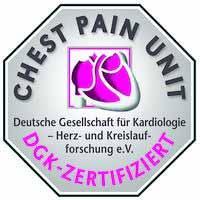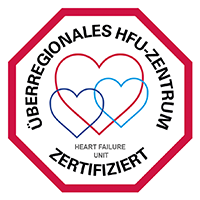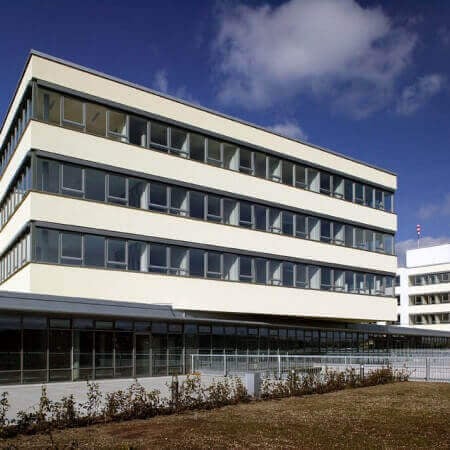Stokes-Adams syndrome is manifested by episodes of loss of consciousness with or without muscle twitching in acute cardiac rhythm disturbances when the stroke volume suddenly decreases to a degree that causes severe cerebral ischemia. This health condition is the clinical manifestation of sudden cessation of effective cardiac activity and is seen in ventricular flutter and fibrillation.
Content
- Overview
- Changes occurring with Stokes-Adams syndrome
- Why does Stokes-Adams syndrome occur?
- Types of Stokes-Adams syndrome
- Treatment tactics for Stokes-Adams syndrome
- Treatment of Stokes-Adams syndrome in Europe
- The cost of treatment in European hospitals
Overview
Stokes-Adams syndrome can be considered a complication of atrioventricular block, especially the distal form of complete AV block, which is accompanied by severe hemodynamic disorders caused by a critical decrease in cardiac output and acute hypoxia of organs, particularly of the brain.
One of the first organs affected by the lack of oxygen is the brain, since out of all human organs it is the brain that has almost no oxygen reserves of its own. Therefore, any fluctuations in the oxygen level have a negative effect on the overall health, of course, but the brain especially, which primarily responds to such reactions by the development of convulsive health conditions, oppression, and development of pathological breathing.
Stokes-Adams syndrome is characterized by sudden and wavy course with the occurrence of attacks, accompanied by loss of consciousness, respiratory depression, the development of convulsive syndrome, and acute widespread ischemic brain damage with temporary asystole.
Changes occurring with Stokes-Adams syndrome
Stokes-Adams syndrome is characterized by the sudden loss of consciousness with convulsions, pallor followed by cyanosis and respiratory disorders. During the attack, BP is undetectable and heart sounds are usually not audible. Stokes-Adams attacks result from cerebral ischemia with a sudden decrease in cardiac output due to heart rhythm disturbances or a decrease in heart rhythm. And again, it is most often caused by various forms of atrioventricular blocks.
In most cases, a seizure occurs when the heart rate becomes less than 30 beats per minute. The cause of a seizure may be not only an excessively rare, but also an excessively frequent rate of ventricular contractions of the heart, usually more than 200 beats per min. Arrhythmias with such a high heart rate usually occur when the patient has additional conduction pathways between the atria and ventricles. Finally, the complete loss of ventricular contractile function due to ventricular fibrillation or asystole sometimes leads to the development of an attack.
The onset of an attack is sudden. The patient feels sharp dizziness, darkening of the eyes, and weakness. Then pallor occurs and in a few seconds a person loses consciousness. After about half a minute, there are generalized epilepsy-like convulsions, often accompanied by involuntary urination and defecation. About half a minute later, there is usually a respiratory arrest, which may be preceded by respiratory arrhythmias, and marked cyanosis develops. The pulse is not usually detectable during the attack. It is impossible to measure BP as well. After recovery of the pumping function of the heart, the patient’s health condition restores, and they most often do not remember the attack and the sensations preceding it (retrograde amnesia).
When such a health condition is detected for the first time, even if the diagnosis is presumptive, hospitalization to a cardiology facility is indicated to clarify the diagnosis and choose a therapy.
Why does Stokes-Adams syndrome occur?
Stokes-Adams syndrome development is based on a sharp reduction of the cardiac output, which causes blood flow slowing, insufficient supply of organs and tissues with blood, oxygen, and nutrients. Initially, hypoxia affects the nervous structures, including the brain. The work of the CNS is disturbed, and loss of consciousness occurs. A little later there are convulsive muscle contractions, indicating pronounced oxygen starvation of tissues. The prolonged seizures, especially those caused by ventricular fibrillation, can lead to encephalopathy, and multiple organ failure. If minimal blood flow is preserved (heart blocks, arrhythmias), the disease is milder. In most cases, seizures do not lead to delayed consequences.
Types of Stokes-Adams syndrome
To plan treatment and select preventive measures, doctors use a pathogenetic classification, which takes into account the causes and mechanisms of seizure formation. In emergency care, Stokes-Adams syndrome is more convenient to classify by the type of coronary rhythm disturbance, because it allows to quickly determine the optimal treatment tactics. The following types of heart disease are distinguished:
- Adynamic type. It is observed along with sinoatrial node failure. It includes a cardiac arrest occurring when the intracardiac pulse conduction is abruptly and completely disrupted.
- Tachyarrhythmic type. It is determined when the heart rate increases to 200 per minute or higher. It is detected in sinus tachycardia, flutter, and ventricular fibrillation.
- Mixed type. This type of disease implies moments of atrial or ventricular tachycardia alternated with episodes of asystole. The attack develops with a rapid decrease in heart rate from high readings to bradycardia or temporary cardiac arrest. This form is the most difficult to diagnose, and it is the most unfavorable one in terms of prognosis.
Treatment tactics for Stokes-Adams syndrome
Medical care for patients with Stokes-Adams syndrome includes direct seizure management and prevention of recurrences. The treatment includes:
- Seizure management. A similar management algorithm as in the medical tactics for cardiac arrest is applied. In case of precardiac arrest, indirect massage is recommended, while in the absence of breathing, resuscitation without or with the use of appropriate equipment is applied. In severe cases, electric defibrillation is performed. With tachyarrhythmia, antiarrhythmic drugs are indicated.
- Seizure prevention. If seizures are caused by paroxysms, the patient needs medications to stabilize the myocardium and level the heart rhythm. If the blocks are present, drug therapy is ineffective and implantation of a pacemaker is necessary. In reciprocal tachycardia, surgical destruction of one of the AV node conduction pathways is possible.
Treatment of Stokes-Adams syndrome in Europe
The therapeutic management for Stokes-Adams syndrome is similar to the treatment of cardiac arrest. Time is a critical factor, and not a second should be lost at the beginning to clarify whether ventricular fibrillation or asystole is occurring.
After the patient is transported to the intensive care unit, the treatment continues with the following manipulations:
- 24-hour monitoring of the heart rhythm.
- Continued administration of all the medications, depending on the health condition of the patient.
- Addition of glucocorticosteroids to prevent inflammation.
- As blood pressure is restored, injections of diuretics and alkaline solutions are added.
- Application of antiarrhythmic drugs.
- Treatment of the underlying disease.
- Electrostimulation in case of insufficient effect from the measures taken.
For Stokes-Adams seizure prevention, patients should have continuous electrocardiographic monitoring and active prophylactic treatment after an attack has subsided. The most reliable method of seizure prevention is pacemaker implantation with an active electrode inserted through the external jugular vein into the right ventricle. If it is not possible to use a pacemaker, drug treatment becomes an option of choice.
When placing a pacemaker in patients, the course of the heart disease and the frequency of Stokes-Adams attacks should be taken into account. Depending on this, there are two types of cardiac pacing:
- Permanent (performed when there is a complete block).
- Temporary, "on-demand" (used for an incomplete block).
As for drug therapy, the most effective prophylactic agents are isoprenaline, orciprenaline, and atropine. During or immediately after the end of an attack, an infusion of isoprenaline or orciprenaline should be started, lasting several days until ventricular contractions stabilize. In the process of increasing the contraction rate, ventricular ectopic excitability also increases and there is a risk of ventricular fibrillation. For this reason, when treating complete atrioventricular block with isoprenaline, doctors are always prepared for immediate electroimpulsive treatment.
In patients with Stokes-Adams syndrome, it is appropriate to use atropine simultaneously, first intravenously for several days after the attack, and then orally. Once the optimal ventricular rate has been achieved, the rate of intravenous drugs is gradually reduced and then discontinued. When isoprenaline is not available, prolonged treatment with ephedrine in combination with atropine is tried. The possibility of prolonged treatment with saluretics to lower the serum potassium content can also be considered.
The treatment is also based on the form of the Stokes-Adams syndrome attack.
In tachyarrhythmic form, first of all, elimination of ventricular fibrillation by electric pulses is required. Subsequently, surgical intervention is prescribed to eliminate additional conduction pathways in the heart muscle. The implantation of the pacemaker-cardioverter is necessary for ventricular tachycardia.
The treatment of bradyarrhythmic form implies temporary electrostimulation with atropine injection. In case of negative effects, aminophylline is administered. If the measures have no effect, dopamine and adrenaline are used. Once the patient's health condition is stable, permanent electrostimulation is recommended.
Only with timely and high-quality treatment, it is possible to improve the patient's health condition and prognosis of life.
The cost of treatment in European hospitals
The cost of treatment in Europe corresponds to the level of medical services provided, which is one of the highest in the world. This circumstance contributes to the fact that many patients with various health problems from all over the world come to European hospitals for treatment.
Going for treatment to Europe, you must consider the accommodation prices. The prices, of course, depend on where you are planning to stay. There are plenty of budget options for accommodation in different countries in Europe that won’t distract your financial focus from the cost of treatment.
If you contact a medical tourism company like Booking Health, you, of course, will be presented with different accommodation options, as well as other services, including translation of the medical documents, visa support, transfers, and interpretation services. Booking Health provides each of the mentioned services and so many other ones that can make your treatment in European hospitals as comfortable as it can possibly be.
The cost of treatment with medical procedures carried out in European hospitals is not that high as people may think, while the quality meets the highest international standards. It is a shame that because of concerns and formed opinions regarding the high prices for treatment in Europe, people with different health conditions deprive themselves not only of the high-quality treatment, but also of the necessary alternative option. But you do not have to do it like that. For your convenience, comfort, and support, you can choose to use the services of Booking Health and be free from any organizational issues, whatsoever.
All you need to do is to fill in the request form on the Booking Health website for a patient manager to contact you.
Authors: Dr. Vadim Zhiliuk, Dr. Sergey Pashchenko




